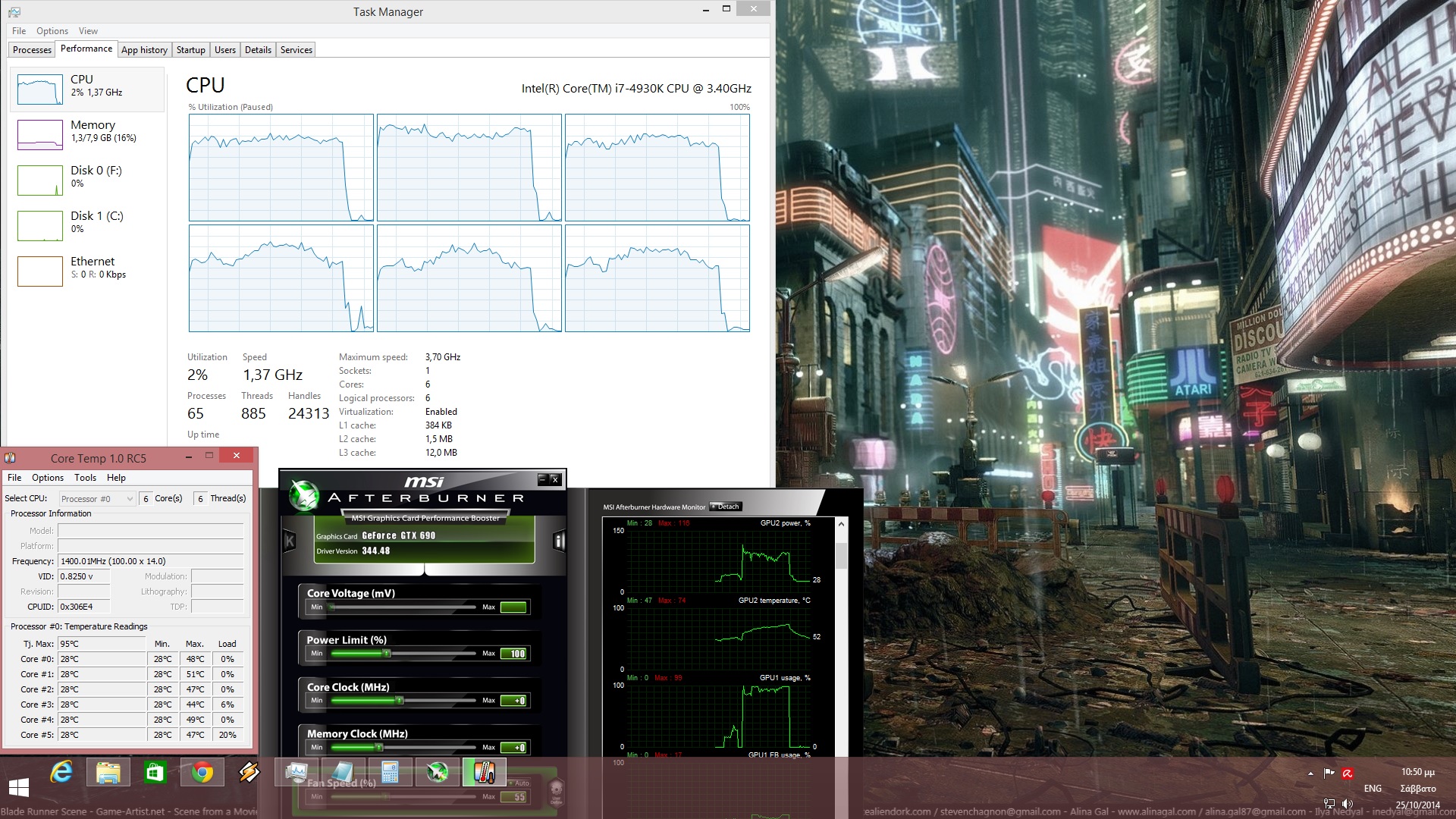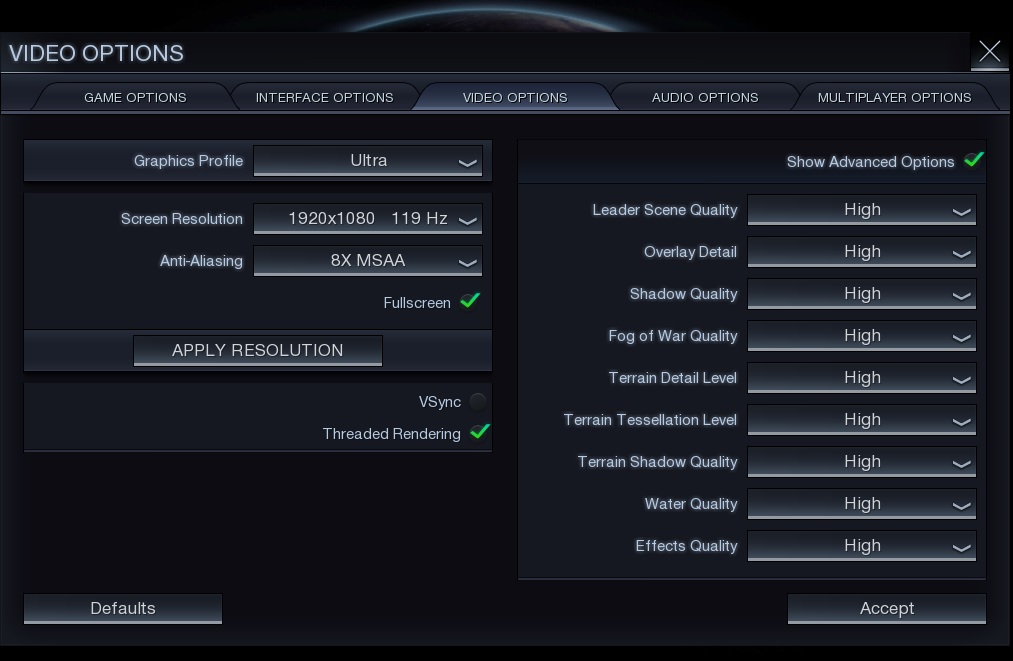Sid Meier’s Civilization: Beyond Earth has just been released and it’s time to see how this new turn-based strategy performs on the PC. Given its PC-only nature, most would expect Civilization: Beyond Earth to be properly optimized for our platform. Well, we are happy to report that Civilization: Beyond Earth performs incredibly well, scales wonderfully on multiple CPU cores, takes full advantage of SLI technology (despite the fact that it’s an AMD-powered game), comes with Mantle support for those owning AMD’s graphics cards, and can run with constant 60fps even on dual-core systems.
As always, we used an Intel i7 4930K with 8GB RAM, NVIDIA’s GTX690, Windows 8.1 64-bit and the latest version of the GeForce drivers. NVIDIA has already included an SLI profile for this title that works amazingly well. Yesterday, we informed you about the game’s SFR support via its Mantle path. In DX11 mode, the game falls back to AFR mode, and thanks to NVIDIA’s optimizations, we noticed an incredible 98% usage on both of our GPU cores.
As we’ve already said, Civilization: Beyond Earth scales amazingly well on multiple CPU cores. In order to find out whether Borderlands: The Pre-Sequel takes advantage of more than two CPU cores, we simulated a dual-core, a tri-core and a quad-core system. Moreover, Firaxis has included a built-in benchmark tool via which we could easily test the game. Do note that this benchmark is basically a stress test, meaning that the actual game runs way better.
In order to avoid any possible GPU limitation, we lowered our resolution to 1024×768 (while keeping all graphical settings at Ultra). The benchmark tool of Civilization: Beyond Earth ran with an average of 138fps on our hexacore CPU. Our simulated quadcore system pushed 127fps, while our simulated tricore system pushed 113fps. Surprisingly enough, our simulated dual-core system was able to run the benchmark with an average of 91fps, meaning that those with weaker systems will be able to enjoy this new strategy title. Oh, and in case you’re wondering then no; Hyper Threading does not provide any additional gains at all in this title.
Regarding its GPU requirements, a GTX680 was unable to run the benchmark tool with constant 60fps at Ultra settings and with 8xMSAA in 1080p (average framerate was 50fps). By lowering our AA value to 2xMSAA, we managed to gain 5 more frames. Now as we’ve already said, the benchmark tool is basically a ‘worst case’ scenario, thus a GTX680 is enough for enjoying the game. On the other hand, our GTX690 (running in SLI mode) was able to push 83fps with Ultra settings and 8xMSAA in 1080p, and 97fps without any amount of AA).
Civilization: Beyond Earth offers a number of graphical options and as such, PC gamers can adjust the quality of Leader Scene, Overlay, Shadow, Fog of War, Terrain Shadow, Water and Effects, as well as the quality level of Terrain Detail and Terrain Tessellation.
Graphics wise, we have to admit that we were not really impressed with Civilization: Beyond Earth. For requiring a GTX680, someone would expect better visuals than those displayed on screen. Now do not misunderstand us; Civilization: Beyond Earth is not a bad looking game. It’s just that we expected something more ‘wow-ish’ than what is being currently offered.
All in all, Sid Meier’s Civilization: Beyond Earth performs incredibly well on the PC platform, despite the fact that it will not dazzle you with its visuals. The game scales on multiple CPU cores and perhaps for the first time, we see a noticeable difference between a hexacore and a quadcore system. Not only that, but the game is fully enjoyable even on dual-core systems. And even though a GTX680 is unable to run the benchmark tool with constant 60fps, Civilization: Beyond Earth comes with various graphical options for those with weaker GPUs to tweak.
Enjoy! If you noticed Borderlands in the text above, you’re indeed paying attention to the article’s details. If not… well… you failed this little fun test

John is the founder and Editor in Chief at DSOGaming. He is a PC gaming fan and highly supports the modding and indie communities. Before creating DSOGaming, John worked on numerous gaming websites. While he is a die-hard PC gamer, his gaming roots can be found on consoles. John loved – and still does – the 16-bit consoles, and considers SNES to be one of the best consoles. Still, the PC platform won him over consoles. That was mainly due to 3DFX and its iconic dedicated 3D accelerator graphics card, Voodoo 2. John has also written a higher degree thesis on the “The Evolution of PC graphics cards.”
Contact: Email












